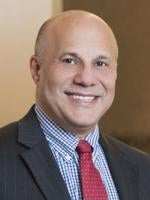Can the recipient of an actual fraudulent transfer effectively “cleanse” the transfer if the funds are returned to the debtor? In a recent opinion, the United States Bankruptcy Court for the Eastern District of Pennsylvania answered that question in the affirmative.
In Holber v. Nikparvar (In re Incare, LLC), the Chapter 7 Trustee (the “Trustee”) sought to avoid approximately $750,000 in alleged actual fraudulent transfers that had been made by the debtor Incare, LLC (“Incare”) to Advanced Urgent Care P.C. (“Advanced”). Advanced was an emergency medical services provider that was wholly-owned by Incare’s principal, Dr. Mehdi Nikparvar (“Nikparvar”).
The Trustee’s claims were brought pursuant to section 544(b) of the Bankruptcy Code. Section 544(b)(1) permits a trustee to avoid a transfer of an interest of the debtor in property that is voidable under applicable law by an unsecured creditor. In this case, the applicable law relied upon by the Trustee was the actual fraud provisions of the Pennsylvania Uniform Fraudulent Transfer Act (“PUFTA”). The Trustee further sought to recover the alleged fraudulent transfers from Advanced as a transferee under section 550(a) of the Bankruptcy Code.
The transfers at issue arose out of a dispute between Incare and Dr. Marcos Sanchez (“Sanchez”). Sanchez was a former employee of Incare who had obtained a $400,000 judgment against Incare and a garnishment of one of its primary bank accounts. While Incare was able to successfully reverse the garnishment and open the judgment, Nikparvar was concerned that Incare could be subject to another garnishment as a result of the Sanchez judgment. Given Incare’s financial situation, any further garnishment would have jeopardized Incare’s continued ability to operate. During a two-day bench trial, Nikparvar specifically testified that he caused Incare to transfer funds to Advanced because of these concerns and to prevent Sanchez from again attaching the bank account.
Based on Nikparvar’s admission, the court held that the Trustee had proven that the transfers had been made with the actual intent to hinder and delay a creditor within the meaning of PUFTA and were therefore actual fraudulent transfers. In a typical case of an actual fraudulent transfer, this holding would have been the end of the discussion, and the Trustee would have been able to recover the money transferred by Incare to Advanced pursuant to Bankruptcy Code section 550(a).
The noteworthy wrinkle here though is that during the time that Incare was transferring funds to Advanced, Advanced was also transferring funds back to Incare. Specifically, during the relevant time period, Incare made 13 transfers totaling approximately $1.8 million to Advanced and Advanced transferred a nearly identical amount back to Incare (Advanced actually transferred slightly more to Incare than it received). Why the Trustee only sought to recover three transfers totaling roughly $750,000 is unknown. Regardless, because of Advanced’s reciprocal transfers, the Incare bankruptcy estate had not been diminished and creditors had not been harmed. This was referred to by the court as the “diminution of the estate” limitation on the Bankruptcy Code section 544(b) avoidance remedy.
The Trustee argued that because the transfers were actually fraudulent, and not simply constructively fraudulent, the lack of harm to the estate should not be the determinative factor. The court recognized that permitting a party to escape the consequences of an actual fraudulent transfer by returning the funds created “something akin to a moral hazard.” Nonetheless, the court agreed with Advanced, holding that while the transfers were actually fraudulent under PUFTA, as made applicable to the bankruptcy case pursuant to section 544(b), the transfers were not recoverable under section 550(a) of the Bankruptcy Code.
The court explained that because the funds were returned there was no harm to Incare’s creditors and without any such loss, “permitting the Trustee to recover under [section 550] would result in a windfall to the estate, not supported by bankruptcy policy.” Furthermore, because section 550(a) is remedial, and not penal, in purpose, the court held that it could “reduce or eliminate a trustee’s recovery under section 550 where some or all of the transferred property was returned to the debtor pre-petition.” In essence, the court gave Advanced an “equitable credit” for the money that it transferred back to Incare. Because Advanced had returned to Incare a few hundred dollars more than it had received from Incare, this “equitable credit” resulted in Advanced escaping liability for any of the transfers.
The court’s decision in Incare is likely to have limited impact, since there are few cases where the recipient of a fraudulent transfer returns the funds, voluntarily or involuntarily, pre-petition. Nonetheless, the court’s decision is significant in that the court extended the “equitable credit” concept from constructive fraudulent transfers to actual fraudulent transfers.





 />i
/>i
